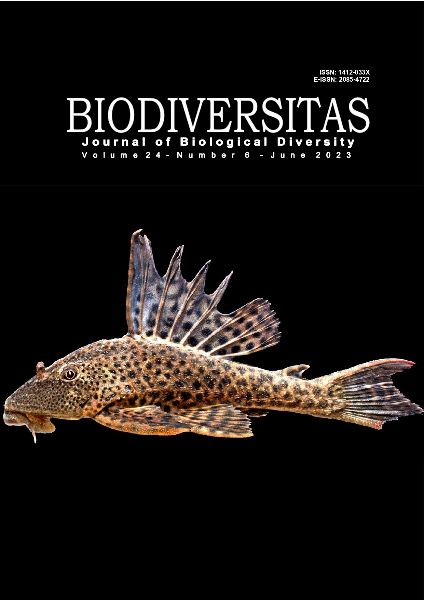Ecological niche affects mitochondrial DNA diversity and variation in near-threatened Himalayan vulture (Gyps himalayensis)
##plugins.themes.bootstrap3.article.main##
Abstract
Abstract. Ummee C, Sitdhibutr R, Lertwatcharasarakul P, Kasorndorkbua C. 2023. Ecological niche affects mitochondrial DNA diversity and variation in near-threatened Himalayan vulture (Gyps himalayensis). Biodiversitas 24: 3630-3640. The impact from the use of diclofenac on the Indian subcontinent is the main reason why the Himalayan vulture Gyps himalayensis Hume, 1869 has near-threatened conservation status. In particular, it has ecological niches different from those of other vultures in the same genus; however, there has been no systematic study on genetic diversity. This study analyzed the genetic diversity of Himalayan vultures that had migrated to Thailand during the winter in conjunction with samples from a limited GenBank database. The results identified no evidence of Himalayan vulture genetic diversity loss after Gyps vultures were affected by diclofenac since the 1990s and the values were related to raptors with stable population status, which may be the result of ecological niche. Genetic differences or group divided were found in the mitochondrial DNA (mtDNA) Control Region (CR) and Cyt b+CR except in Cytochrome b (Cyt b). The group division based on the results of genetic distance between CR and Cyt b+CR shows that the genetic distance between groups of CR was 10-12 times greater than that of Cyt b (0.771±0.055-0.923±0.084 and 0.076±0.068, respectively) and the difference was also present when analyzed with the combined data set of Cyt b+CR (0.448±0.036). This is an important indicator for the possible study of population structure through phylogeography, because the Cyt b from other studies did not indicate any genetic differences between populations of Himalayan vulture and other Gyps vultures, which may update conservation proposals to be more accurate and effective.


 https://orcid.org/0000-0002-2062-6487
https://orcid.org/0000-0002-2062-6487